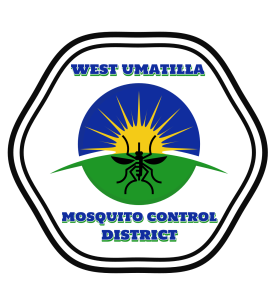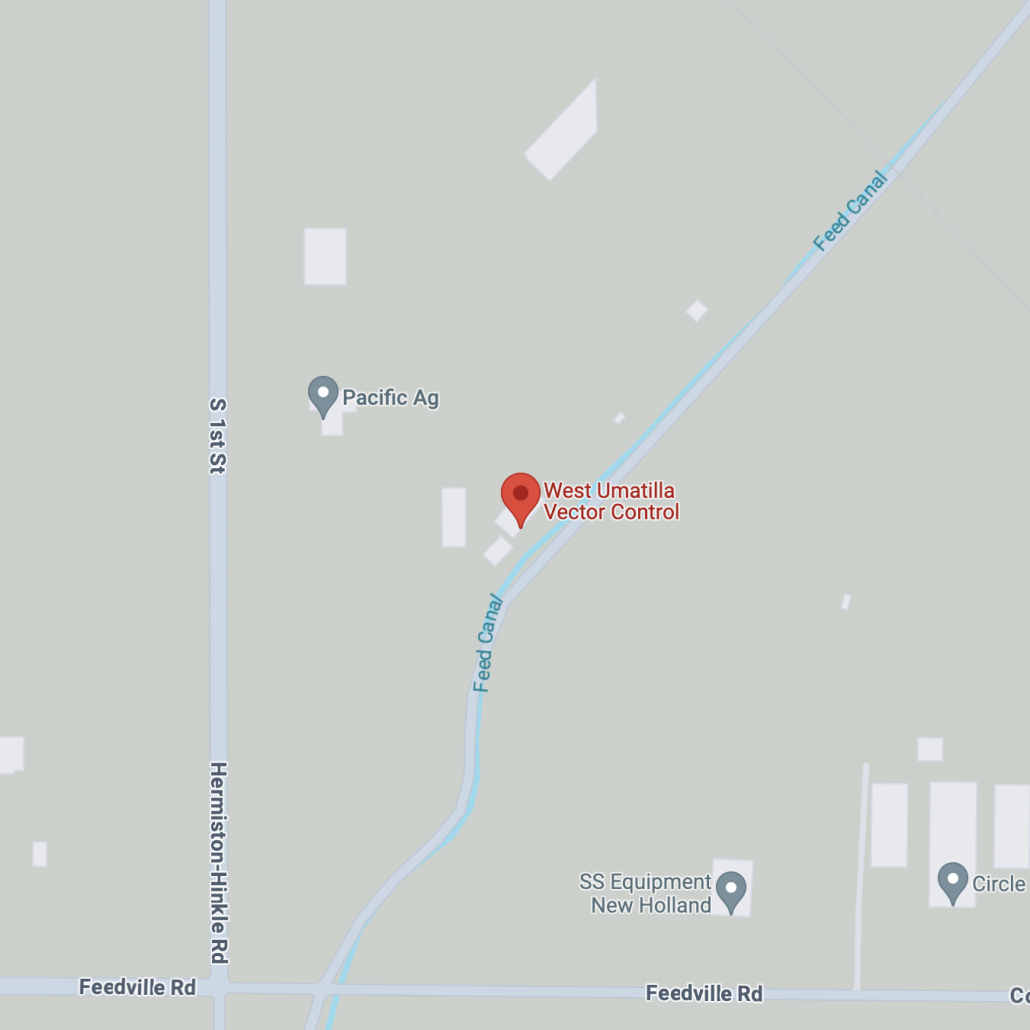Q: What can I do to prevent mosquitoes around my home?
A: The number one thing you can do to prevent mosquitoes is to not give them a place to lay their eggs and develop. Mosquitoes will generally take about 7 days to complete the life cycle of egg to adult and they need water for this to happen. Homeowners can make sure they change out or discard any standing water at least once a week and mosquitoes will not have a chance to develop. Be especially diligent looking for containers around the house that will fill with sprinkler water or after a rain event.
Q: What can I do to reduce my risk of becoming infected with West Nile virus?
A: Here are preventative measures that you may choose to take:
- Avoiding areas with mosquitoes is your best defense but it is not always practical or possible.
- When possible, wear long-sleeved shirts and long pants when outdoors.
- Place mosquito netting over infant carriers when outdoors.
- Consider staying indoors at dawn, dusk and in the early evening, which are peak mosquito biting times (for most species).
- Install or repair window and door screens so that mosquitoes cannot get indoors.
- Drain standing water. Routinely empty water from flower pots, pet bowls, clogged rain gutters, swimming pool covers, discarded tires, buckets, barrels, cans and other items that collect water in which mosquitoes can lay eggs.
- In situations where you anticipate mosquitoes being present, using an insect repellent can be an effective protective step. The Centers for Disease Control recommend using a product with DEET, picaridin or IR3535. If you prefer a natural product, you can use Oil of Lemon Eucalyptus, but please note that its protection is similar to products that contain a low percentage of DEET.
- Repellents may irritate the eyes and mouth, so avoid applying repellent to the hands of children.
- Whenever you use an insecticide or insect repellent, be sure to read and follow the manufacturer’s DIRECTIONS FOR USE, as printed on the product.
- More information may be found at: www.cdc.gov/ncidod/dvbid/westnile/qa/insect_repellent.htm
Q: What do I do if I have a water on my property that I think may be breeding mosquitoes?
A: If you have the ability to prevent the standing water or container from holding water by way of shutting off the source or dumping containers, mosquito larvae will not survive outside of the water source. Alternatively, if it is necessary to maintain a water source, such as a trough, cycling the water every few days can also wash out larvae from the source, preventing them from hatching into adult mosquitoes.
If you cannot change out the water, give the West Umatilla Mosquito Control District a call at 541-567-5201 and they will come out and survey the site to see if it needs to be treated for mosquitoes. If necessary, they will have products available to control the mosquitoes that are present or will suggest other options to control the potential problem.
Q: What is West Umatilla County Mosquito Control doing to survey for possible diseases in the area?
A: WUMCD conducts mosquito monitoring to try and locate the presence of a mosquito-borne illness before it shows up in humans, horses, pets, or livestock. Mosquito Monitoring is the process of collecting adult mosquitoes to be identified, separated, and tested. WUMCD uses CO2 traps to attract and collect adult female mosquitoes. The trap is made up of a cooler that holds dry ice (with holes in the bottom), a fan and a catch bag. Dry ice emits carbon dioxide as it sublimates (goes from solid to gas) and this is a strong, long-range attractant to female mosquitoes (only females bite). When the female gets close to the trap the fan sucks the mosquito into the catch bag, which is then collected the following morning. The mosquitoes are then separated by species and samples are either tested in-house or sent to a state accredited lab.
Q: What should I do if I find a dead bird?
A: Call the office or submit a service request through the website. WUMCD collects corvids (Crows, magpies, etc.) as long as they are dead for less than 24 hours and a saliva sample can be collected. The district will retrieve the bird, collect the sample, and then send the sample to the Oregon State University laboratory for testing. Please do not handle the bird yourself.
Q: I am seeing swarms of what looks like mosquitoes, but I am not getting bit. Are they mosquitoes?
A: Mosquitoes generally do not “swarm”. The district typically has a hatch off of a particular midge species in the early spring and late summer that lasts a few days. Although a nuisance, they do not bite, and unfortunately there is not anything the district can do to treat the issue. Fortunately, these hatches are generally short lived.
Q: What are mosquitofish?
A: Mosquitofish (or Gambusia Affinis) are small minnow-like fish that are used as biological control of mosquito larvae. They are capable of eating up to 300 larvae a day. As a non-native species, they are only applied to closed water sources defined as aquaria that are not connected to or drain into any natural waterway.
You can call the district at 541-567-5201 to schedule a pick-up of mosquitofish from the district office.
Q: How do you decide when and where you spray with the ULV adulticide trucks (commonly called fog trucks)?
The district uses spray thresholds that are based on mosquito abundance and disease surveillance to determine when and where a ULV treatment will take place. The thresholds have been developed over a long period of time and are vary throughout different areas of the district. The district uses different adult mosquito surveillance approaches or a combination of those approaches when determining when a spray mission needs to move forward; trap data, service requests, and landing rates.
Trap Data: Surveillance traps are routinely placed throughout the district to determine mosquito abundance. Some of the traps are set on a routine, others are set to investigate a service request, and others are set in groups for the purpose of collecting as many vectors as possible for disease testing. The district sets 80 to 100 traps per week during the mosquito season. When the number of adult mosquitoes reach a certain threshold, an adulticide treatment will take place in the infested area to knock down the mosquito populations to tolerable levels.
Service Requests: If multiple requests come in from the same area, that will generally trigger an investigation and then a spray response if necessary; however, the area is often trapped first to confirm that the action threshold for treatment is met.
Landing Rates: Our last approach is the use of landing rates or slap counts for nuisance mosquito infestations. Landing rates are performed by a technician physically standing outside in and infested area and counting how many mosquitoes land on the tech per minute to determine the severity of the problem. The counts are done prior to the spray event and sometimes again after to determine efficacy. Techs are not asked to perform landing rates when the risk for disease is present.
Treatment with the ULV trucks are performed after sunset when mosquito activity peaks and only in areas that have met the spray thresholds. It must also be noted that these spray missions are completely weather-dependent; wind speed, temperature, and precipitation all play an important role in mosquito activity and there are also weather restrictions on the insecticide labels that must be adhered to.
The WUMCD does not spray on a schedule and does not do preventative adulticide treatments for events.
Q: What about bees and other pollinators?
A: Larval control practices have little to no harm to pollinators. In regard to the adulticide efforts via ULV trucks, these machines are calibrated to control mosquitoes, thus larger insects, like bees, generally are not affected. Adulticiding missions are performed when honey bees are not active. In addition, WUMCD staff actively avoid spraying near apiaries, providing them a buffer from the pesticide spray.



